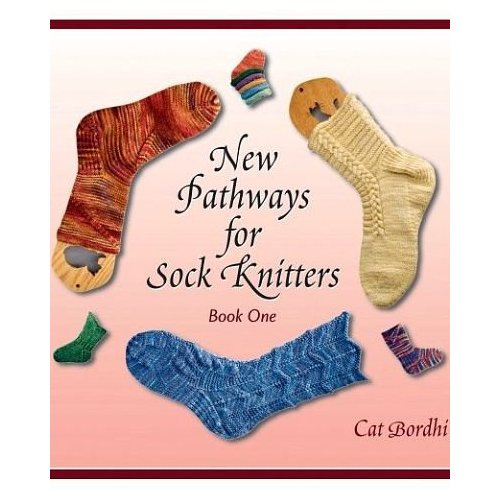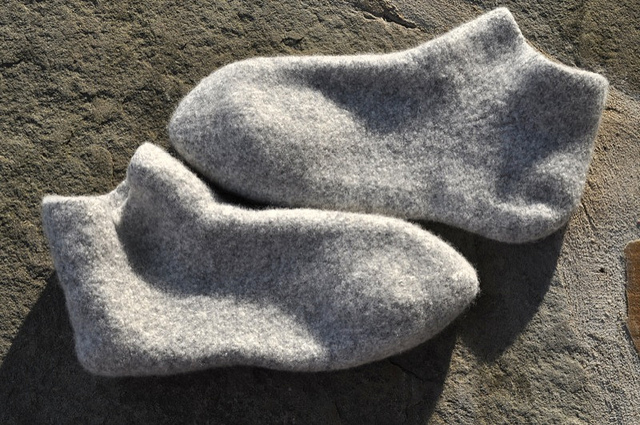Note from the SpaceCadet: My friend Amy (DPUTiger on Ravelry) is a knitting teacher, a quilter, and a newly-minted weaver. And she’s been kind enough to write a series of posts about her favourite ways to start new sock knitters on their journey…
I’m back – finally! — for the final installment in this Sock Knitting series, and this is the post where I gush about the knitter and book that completely changed my knitting life:
Cat Bordhi’s New Pathways for Sock Knitters
When I discovered this book, I had knit one pair of toe-up socks with short-row heels and toes — not an experience I ever wanted to repeat. I was chugging along on socks knit using the Yarn Harlot’s Basic Sock Recipe that I referenced in my last blog post. I was even using double-pointed needles to do it!
So I was about to give up on sock knitting entirely, despite the pile of very pretty and seductive sock yarn I had accumulated (of course, the stash that felt large at that time is roughly 1/10th of my current sock yarn stash. But we won’t talk about that, will we?). I had just moved across the country, from Los Angeles back to my hometown of Pittsburgh, and had begun exploring the various LYSs in the area. While meeting a friend from my new knitting group at a local store, I picked up a copy of New Pathways on a whim and took it home.
Thank God that I did that!
What makes this book so special? What is it about this book that changed my knitting life?
• I will never pick up stitches for a sock gusset again.
• I will always knit perfectly-fitting socks, whether they are for me, my sister-in-law with the teeny-tiny feet, my husband with ginormous ski feet, or anyone else that I want to knit for.
• Cat’s short-row technique for the heel turn has invisible wraps. Really. I’ve never found another short-row/wrap-and-turn technique that I could honestly describe as invisible.
• Not to mention the fact that Cat’s “La-Linc” and “La-Rinc” increases are quite handy in many circumstances — and that almost all of her techniques are detailed through videos on YouTube.
In the most simple terms, to create a New Pathways sock, you knit a tube, then a funnel (increasing by two stitches every three rounds), turn the heel, decrease and knit another tube. That’s it. Those increase lines could be random, could be on the top of your foot, the bottom, the inside, the outside … it doesn’t matter.
Cat Bordhi is my knitting idol. I joke that I would like to be Cat when I grow up, but I know I’m not that fearless. Normal humans make a mistake or deviate from their planned knitting path, and they back up to fix it. Not Cat. She follows her mistakes and sees where they take her. I’ve taken a class with Cat, and this woman makes no bones about protecting her “secret sauce.” Instead, she wants everyone to know the good stuff.
And if you’re local and want to learn what I know about this book, I’m teaching New Pathways starting on Saturday at Bloomin Yarns. Come join us!




















